On June 2, 1953, the coronation ceremony of Queen Elizabeth II of the United Kingdom took place in a solemn yet vibrant atmosphere, watched by millions around the world.
This event marked a significant milestone in the life of the Queen and the history of the British monarchy. The coronation was filled with unforgettable memories, and one of the most remarkable details was the Queen’s powerful gown.
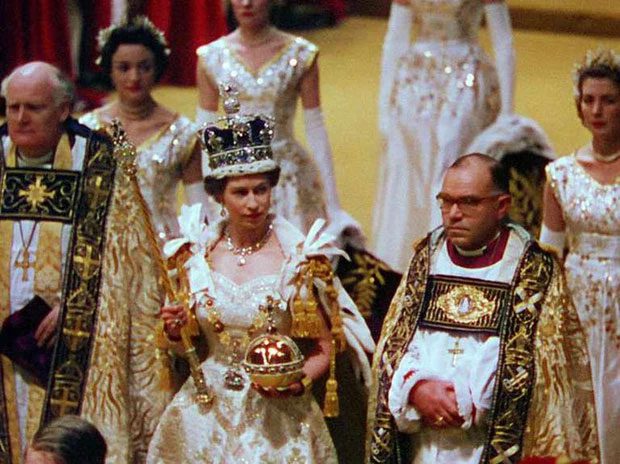
The coronation of Queen Elizabeth II has become a special milestone in history.
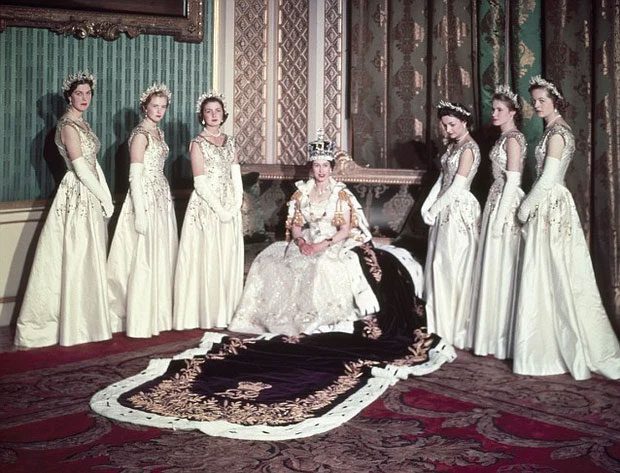
The gown chosen by Queen Elizabeth II remains valuable after 7 decades.
The outfit, combined with a luxurious cape, has become a historical symbol to this day. Images of this special gown have been published in the media and displayed multiple times in exhibitions. However, not everyone knows the truths behind this world-renowned gown.
Who Designed the Coronation Gown of Queen Elizabeth II?
This gown was designed by Norman Hartnell, who also created the Queen’s wedding dress. It is known that in October 1952, the Queen requested Norman Hartnell to create her coronation gown.
Norman Hartnell was known for his close relationship with the royal family and began sketching different designs in his private space in Windsor.
In his autobiography, Norman Hartnell shared: “I envisioned patterns of lilies, roses, and carnations. I also thought of images of the sky, the moon, and the stars. I wanted to create a gown with historical significance“.
This designer created 9 different sketches for the Queen to choose from. Ultimately, she selected the 8th sketch, a number symbolizing prosperity. It was a short-sleeved, sweetheart neckline gown, embroidered with the emblem of the United Kingdom along with many other vibrant patterns.
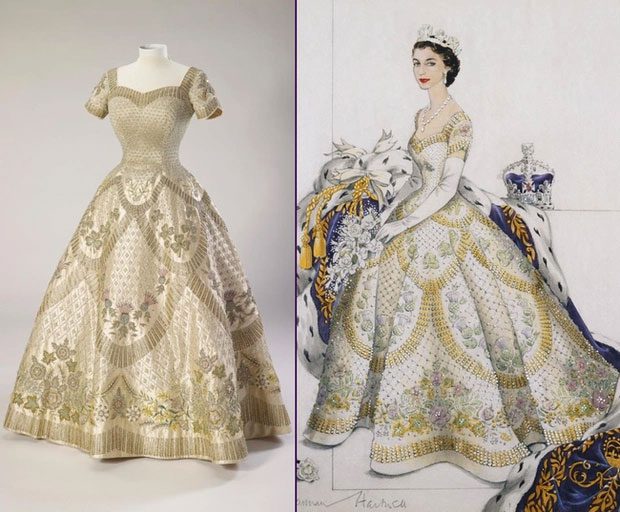
Queen Elizabeth II chose a sparkling gown with many valuable details.
What Makes the Coronation Gown Special?
This outfit took 9 weeks to complete with the help of 6 professional embroiderers. The coronation gown was embroidered with gold and silver threads on a pale yellow silk base, featuring classic shapes and meaningful patterns.
The patterns on the gown included shades of green, pink, and pale yellow, embroidered with silk threads, adorned with pearls, diamonds, amethyst, crystals, and sequins. The designs on this historical gown symbolize the countries within the Commonwealth, such as the maple leaf representing Canada; the silver fern symbolizing New Zealand; and the lotus flower from India. These symbols were combined in a subtle, harmonious, and beautiful manner.
The inner layer of the gown was made of taffeta silk, with three layers of fur padding in the frame, which helped keep it warm but was quite heavy. Notably, designer Norman Hartnell shared that on the inside of the gown, there is a hidden pattern of a four-leaf clover, symbolizing good luck.
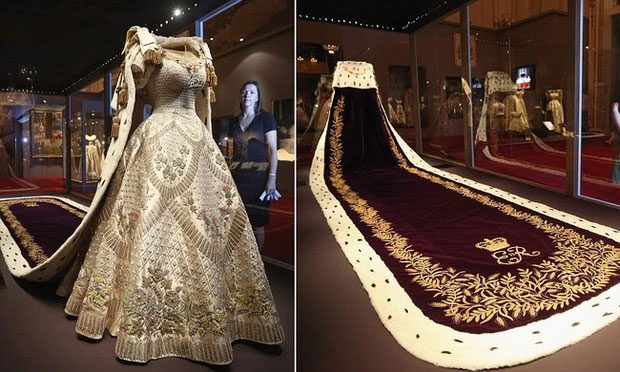
The gown and cape of Queen Elizabeth II were exhibited.
To perfect the gown, the designer also created a silk cape, which added a sense of power to the new Queen. The deep purple cape exuded a majestic aura and was crafted by 12 artisans over more than 3,500 hours.
The Queen’s perfect outfit contributed to the success of this historic coronation ceremony. This was the first coronation of the British royal family broadcast on television in 44 languages, with approximately 20 million viewers watching the ceremony on their screens.
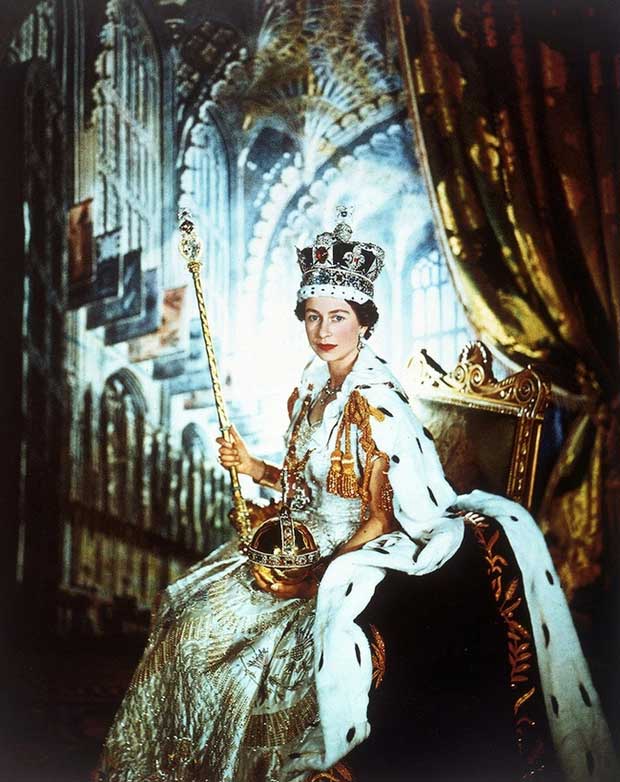
Queen Elizabeth II made history with her impressive coronation.
In early June, Queen Elizabeth II will host the Platinum Jubilee celebrating her 70 years of reign, and many fans hope they will get to see the coronation outfit of the royal leader once again.





















































